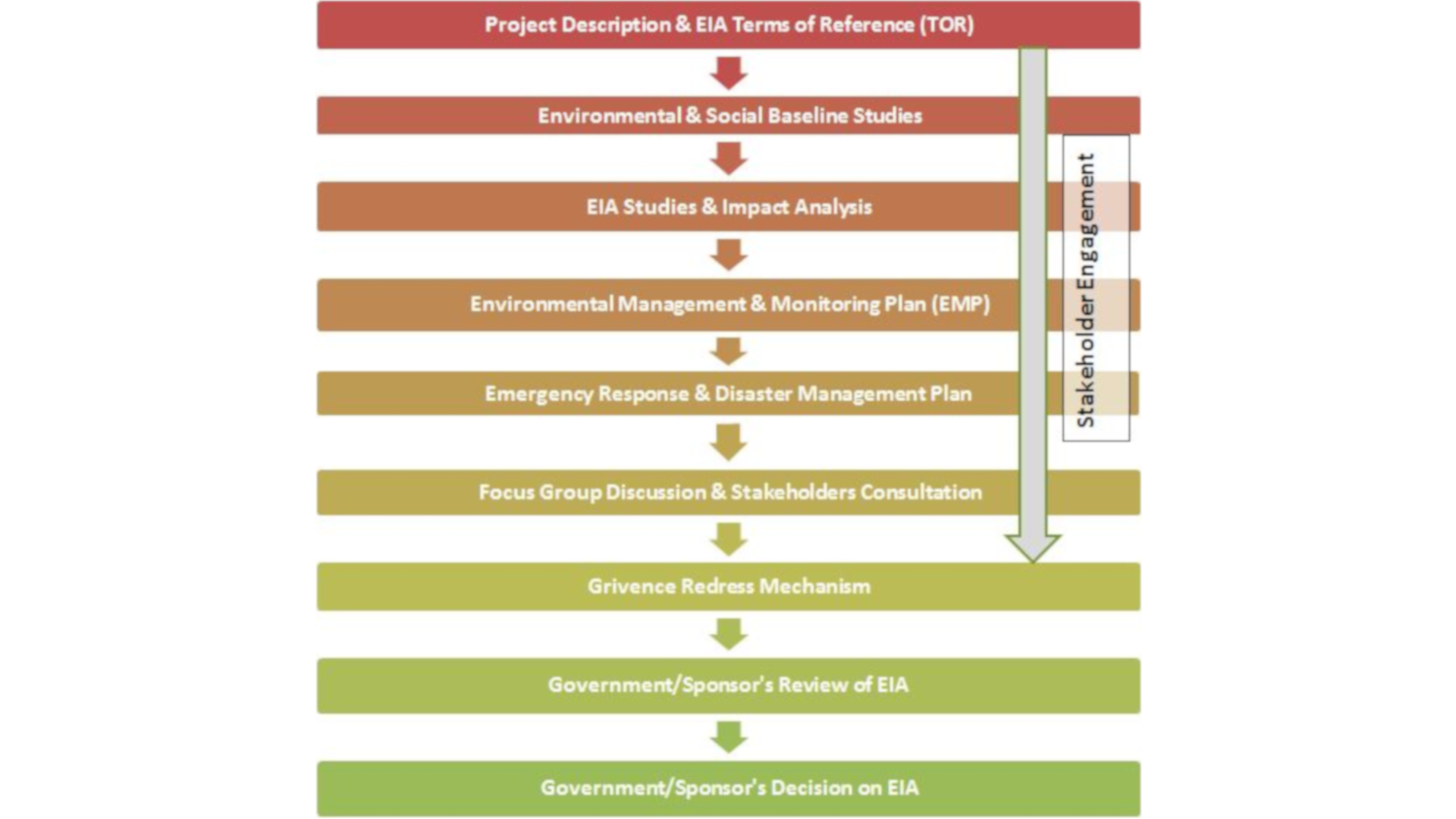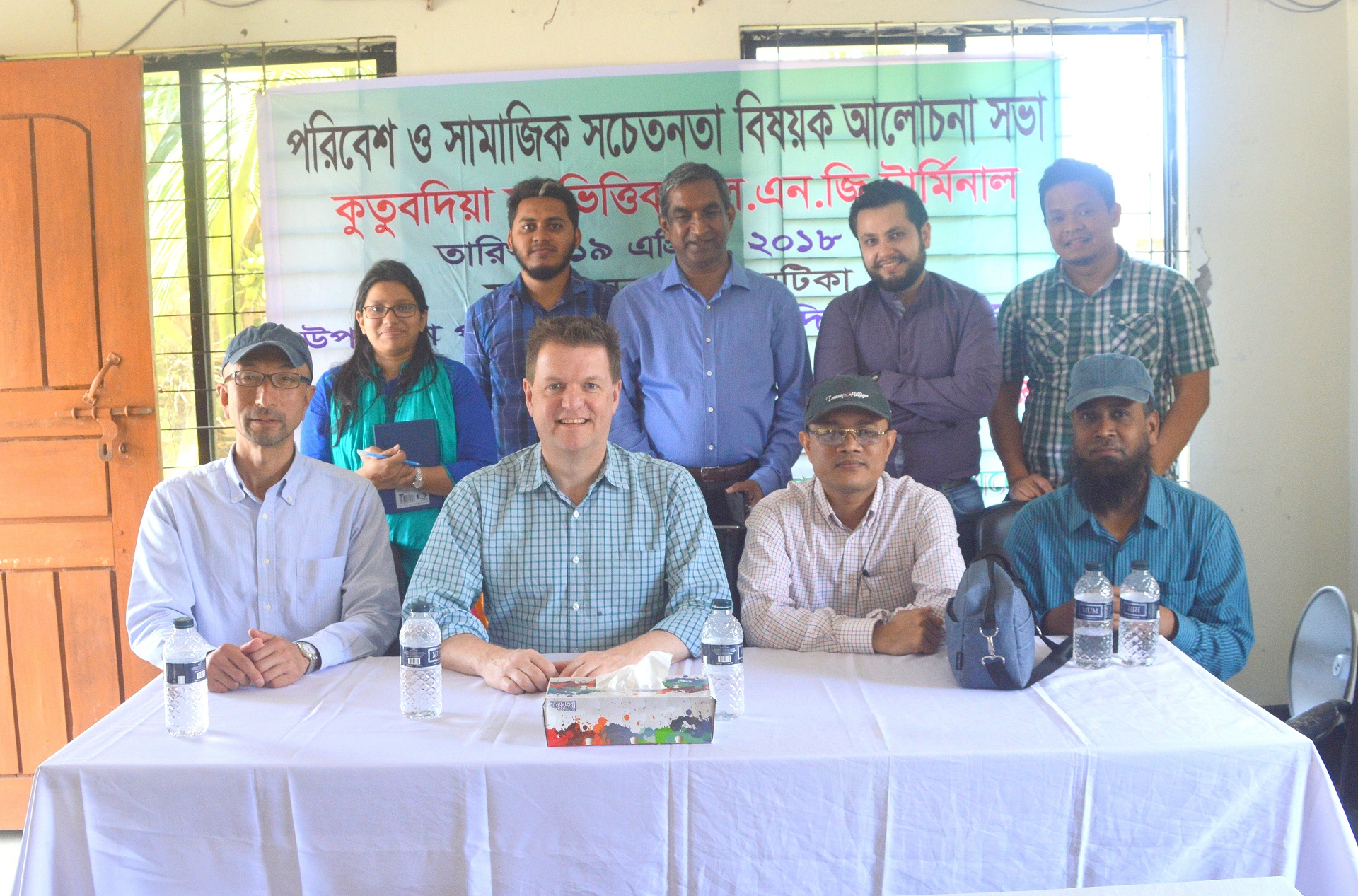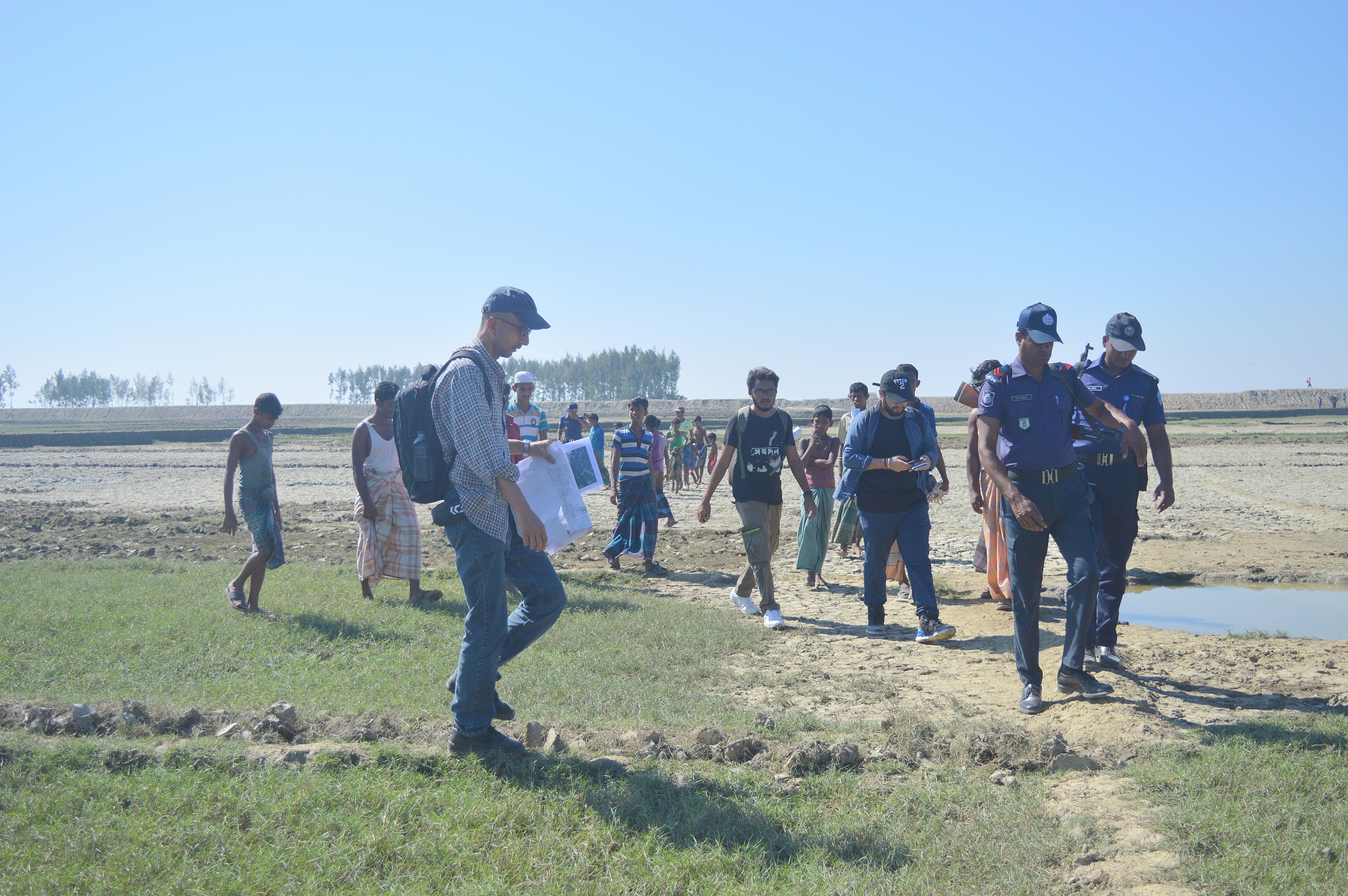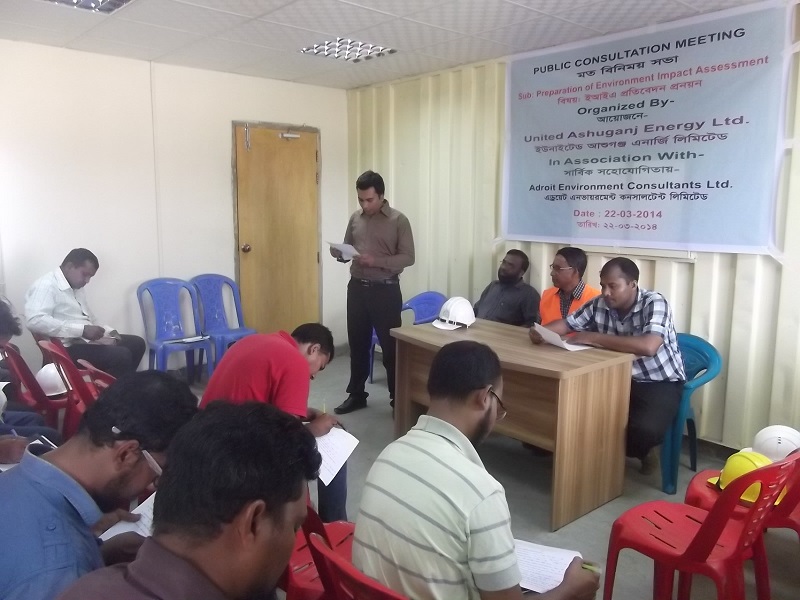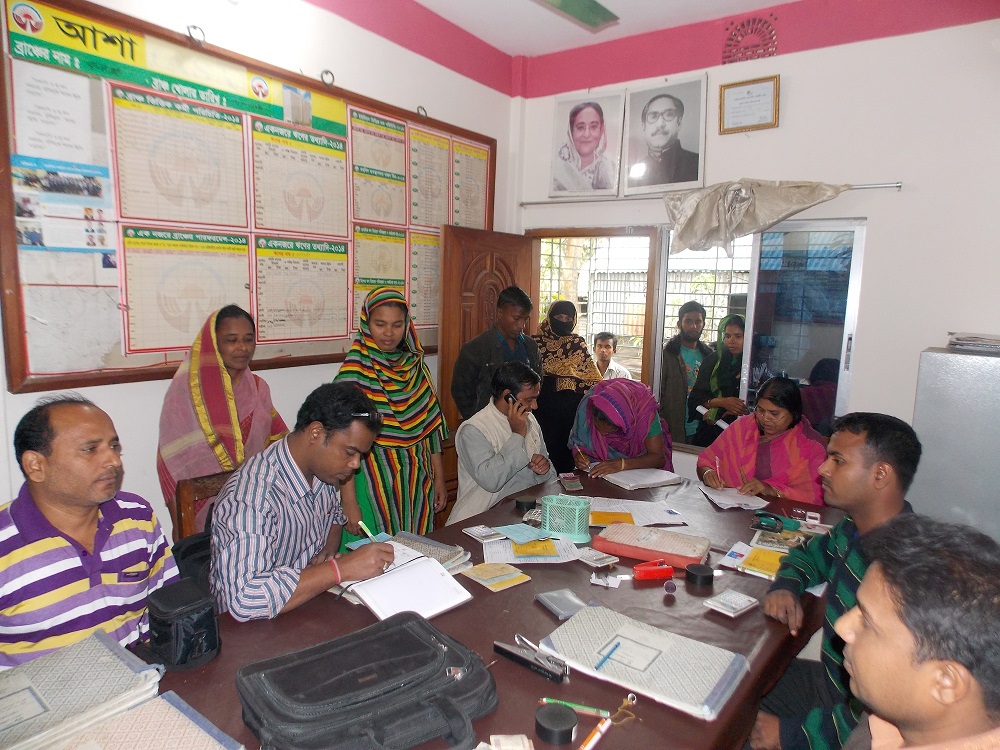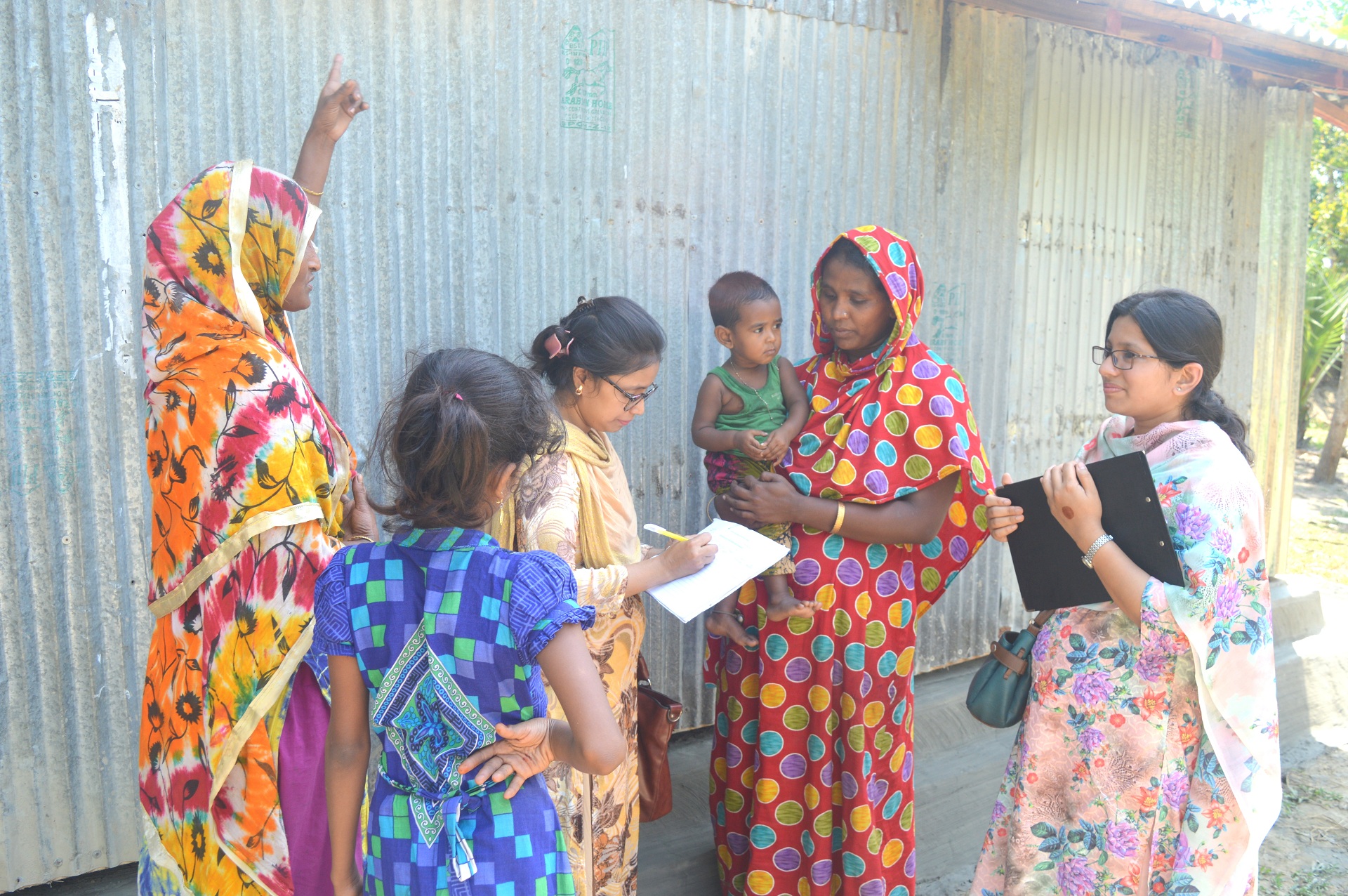Environmental & Social Impact Assessment (EIA/ESIA)
AECL is a pioneer organization in Bangladesh to prepare Environmental & Social Impact Assessment for different sectors. AECL has prepared more than 100 EIA & ESIA reports since the last 15 years period. Recently, AECL has conducted some ESIA report which comply the Environmental & Social Guideline of IFC/WB.
Existing Baseline Studies
Baseline data on environment is important to understand existing physical, biological, cultural, economic and social environmental characteristics. This information serves as the basis for identification, prediction and evaluation of impacts of the project activities.
Mainly there are two principal objectives in examining and defining the existing environment:
- To recognize potential environmental impacts of the project and enable mitigation measures to be identified.
- To provide a base line against which environmental conditions in the future project may be measured and to document conditions which were either existing or developing before the introduction of the project and not due to the project.
The baseline environmental quality is assessed through field studies within the impact zone for various components of the environment, viz. air, noise, water, and land and socio-economic.
Primary and Secondary data are generated and collected for conducting Baseline Study:
- Existing Land Use pattern is studied to identify any ecologically/historically critical area is available surrounding the proposed project.
- Meteorological data of the site is collected from Bangladesh Meteorological Department (BMD).
- Hydrological and morphological data is collected from BWDB and BIWTA.
- Primary and Secondary Socio-economic data is collected using Census data/Government Sources.
AECL team collects sample from the site and assesses the air and noise quality, surface & ground water quality, soil characteristics of the project area in their own laboratory.
In short, AECL analyzes the environmental and social baseline condition of a project in respect of water resources, air quality, noise level, land resources including land use/land cover, agriculture, fisheries, ecosystems and socio-economic condition.
Prediction of Impacts & Modeling
Identification of potential impacts due to the project location, construction and operation of the project is done using Checklist. Checklists are comprehensive lists of environmental effects and impacts indicator designed to stimulate the analysis to think broadly about possible consequences of contemplated actions. In this checklist major activities which create the Significant Environmental Impacts (SEIs) are shown. The terms none, minor, moderate and major are used in checklists to classify the magnitude of SEIs. In case of suggesting mitigation measures the comparison tool has been given priority.
AECL carries out Air Quality & Noise Modeling
- Conducting advanced air emission dispersion modeling for determining the ground concentration of pollutants.
- Noise modeling simulation by using noise modeling software.
Public Consultation (Stakeholder Consultation)
Public involvement is a fundamental principle of the EIA process. Specifically public involvement is a valuable source of information on key impacts, potential mitigation measures and the identification and selection of alternatives. It also ensures the EIA process is open and transparent.
The public has various rights: right to access to information, right to contribute to information and right to challenge decisions.
Therefore, communication between the assessment team and the public is the key to public participation.
AECL arranges “Public Consultation” meetings for conducting EIA / ESIA.
For your query related to Environmental & Social Impact Assessment, you can mail us on the following:

